Abstract
Three siblings with intense jaundice and hemolytic anemia at birth were found to excrete a high level of coproporphyrin in their urine and feces; the pattern of fecal porphyrin excretion was atypical for hereditary coproporphyria because the major porphyrin was harderoporphyrin (greater than 60%; normal value is less than 20%). The lymphocyte coproporphyrinogen III oxidase activity of each patient was 10% of control values, which suggests a homozygous state. Both parents showed only mild abnormalities in porphyrin excretion and lymphocyte coproporphyrinogen III oxidase activity decreased to 50% of normal values, as is expected in heterozygous cases of hereditary coproporphyria. Kinetic parameters of coproporphyrinogen III oxidase from these patients were clearly modified, with a Michaelis constant 15-20-fold higher than normal values when using coproporphyrinogen or harderoporphyrinogen as substrates. Maximal velocity was half the normal value, and we also observed a marked sensitivity to thermal denaturation. The possibility that a mutation affecting the enzyme on the active center which is specifically involved in the second decarboxylation (from harderoporphyrinogen to protoporphyrinogen) was eliminated by experiments on rat liver that showed that coproporphyrinogen and harderoporphyrinogen were metabolized at the same active center. The pattern of porphyrin excretion and the coproporphyrinogen oxidase from the three patients exhibited abnormalities that were different from the abnormalities found in another recently described homozygous case of hereditary coproporphyria. We suggest naming this variant of coproporphyrinogen oxidase defect "harderoporphyria."
Full text
PDF
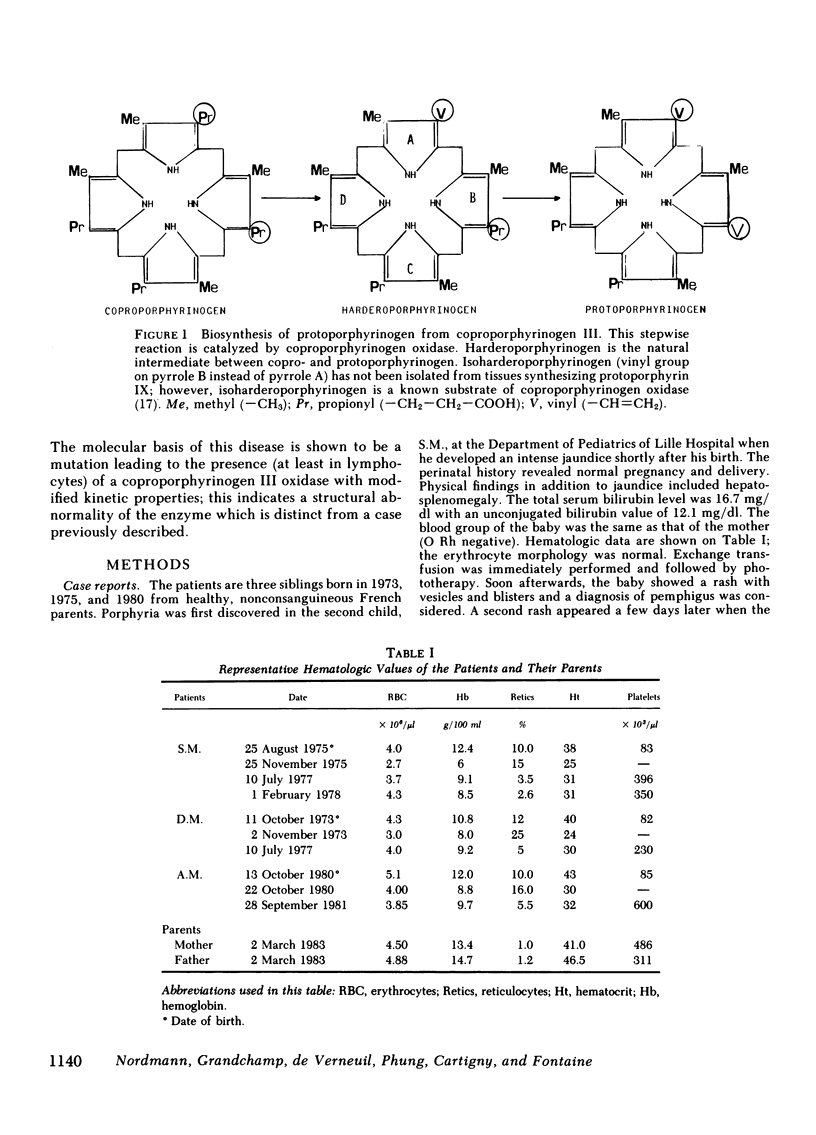
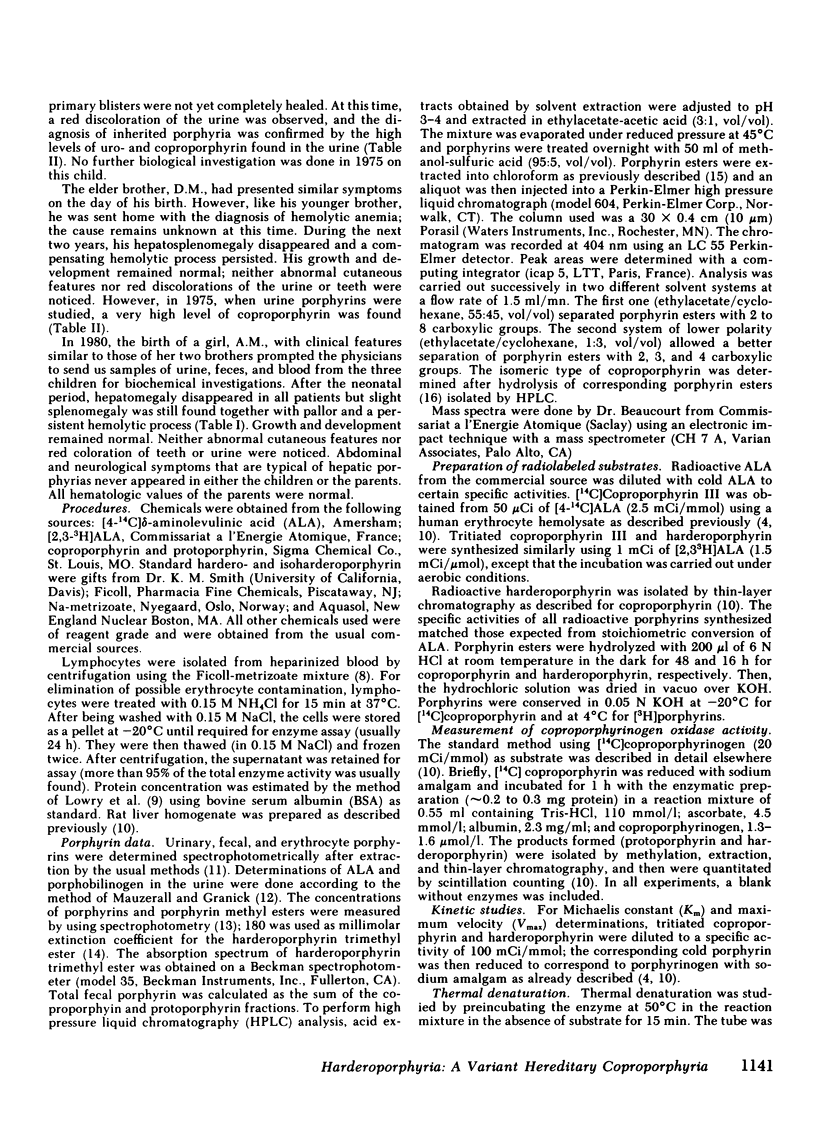
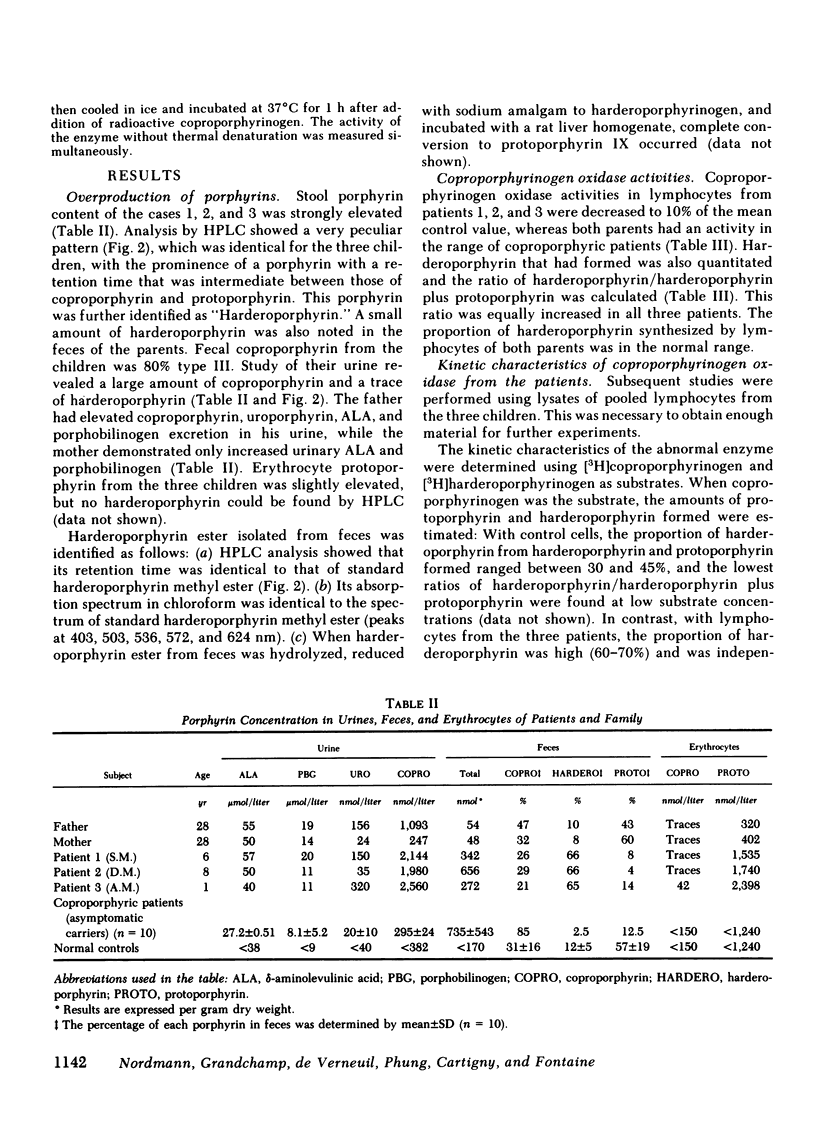
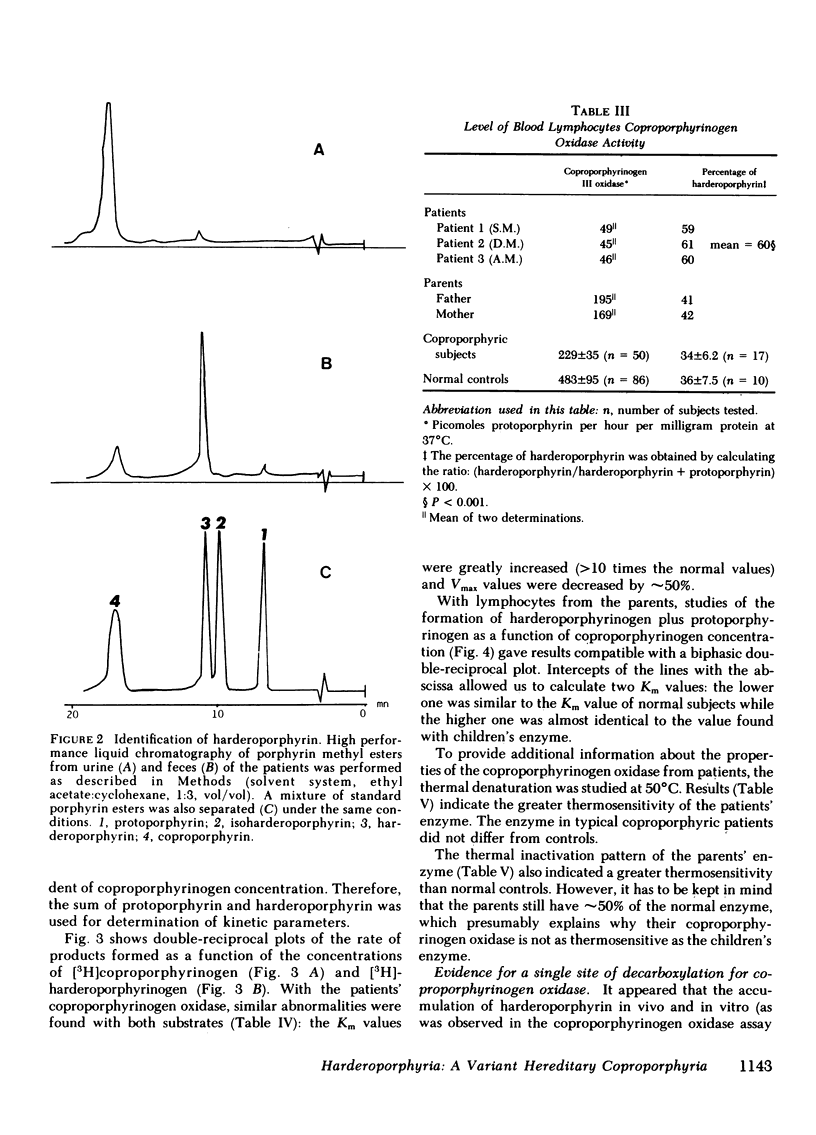
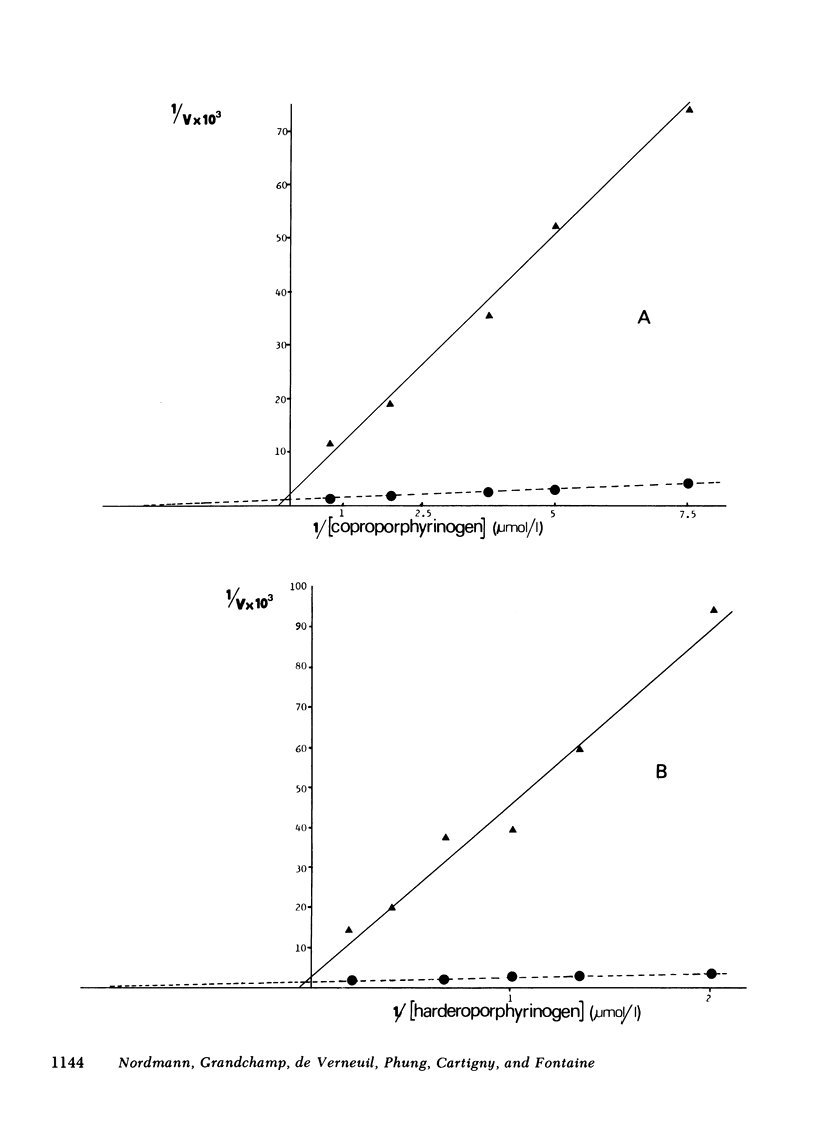
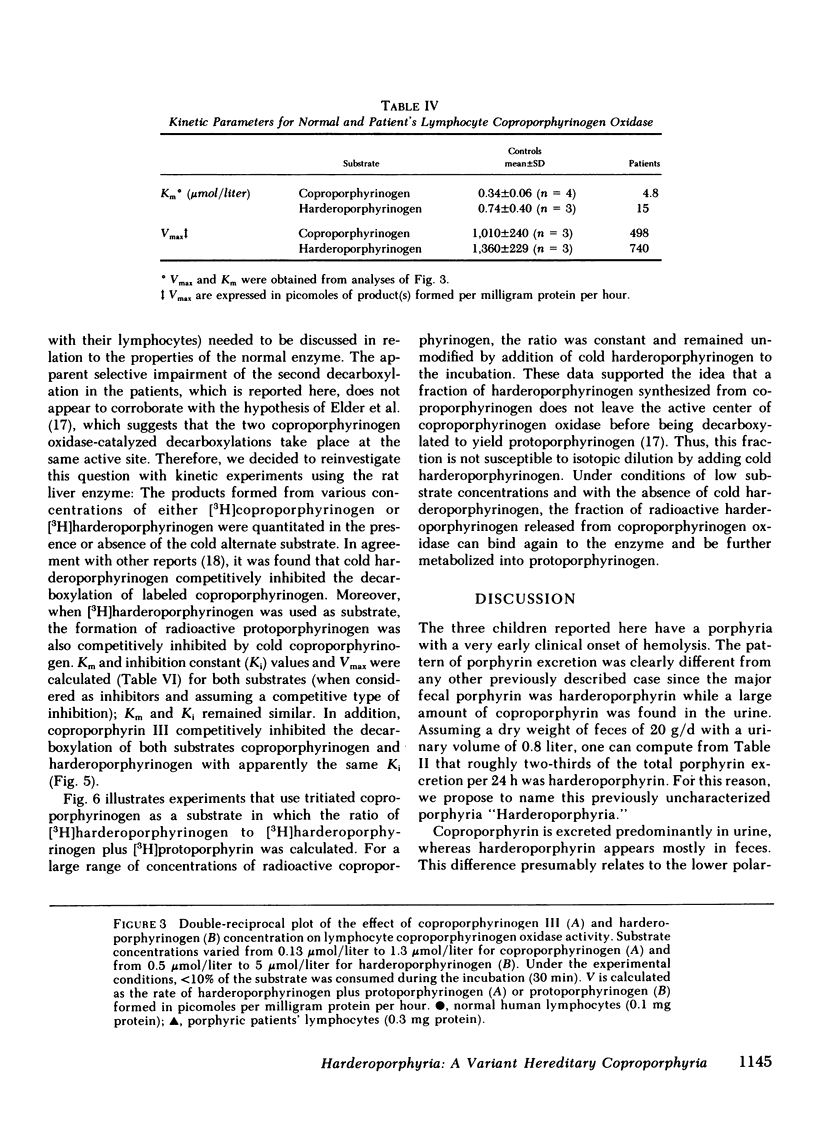
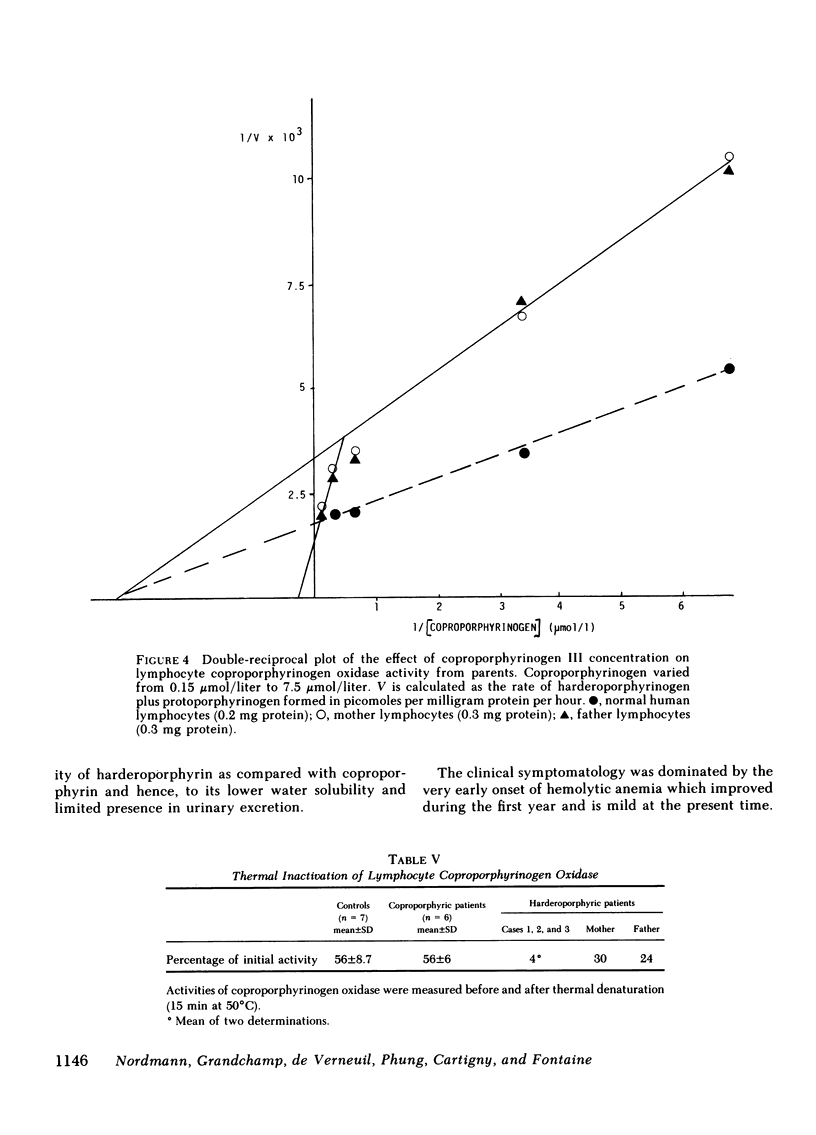
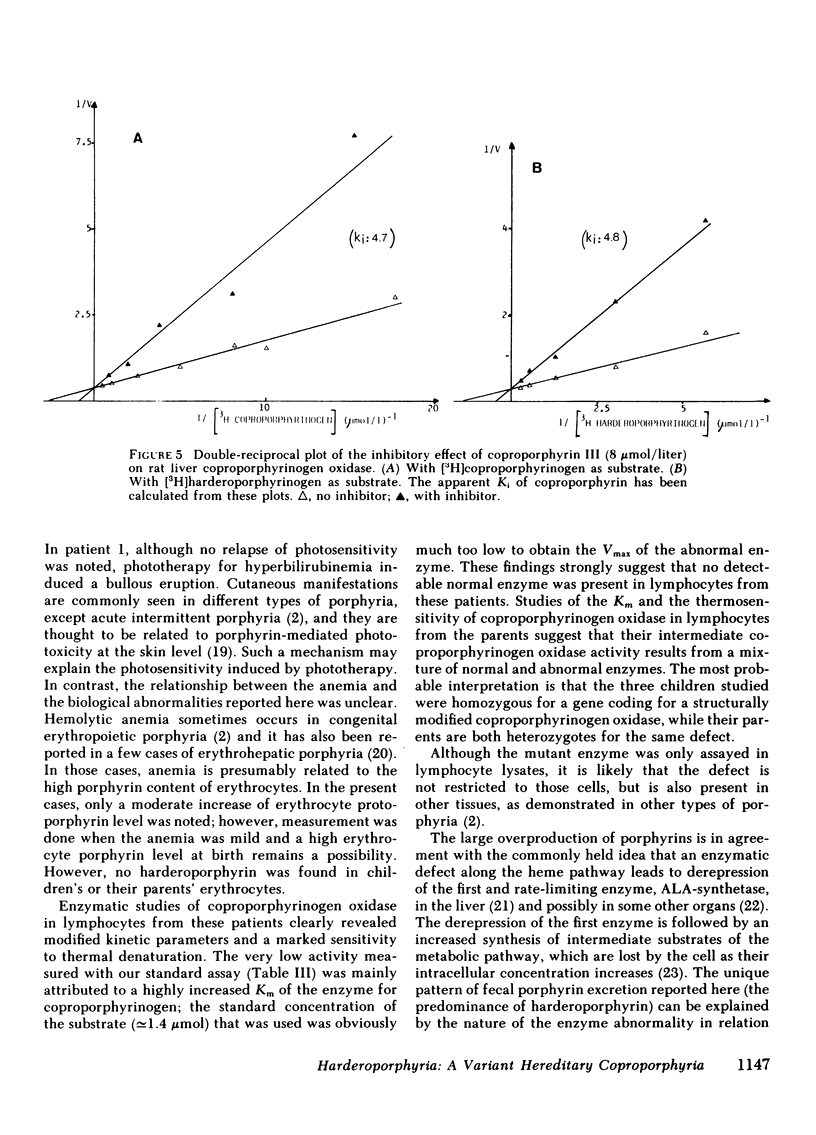
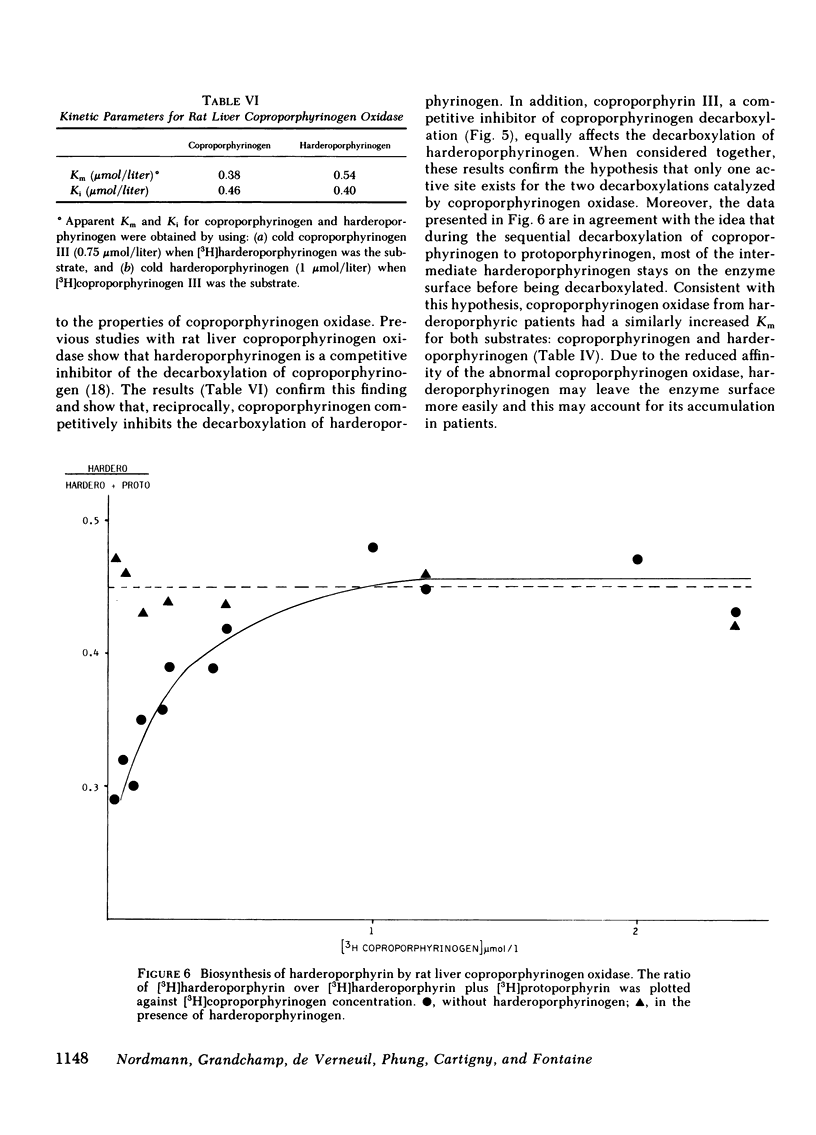
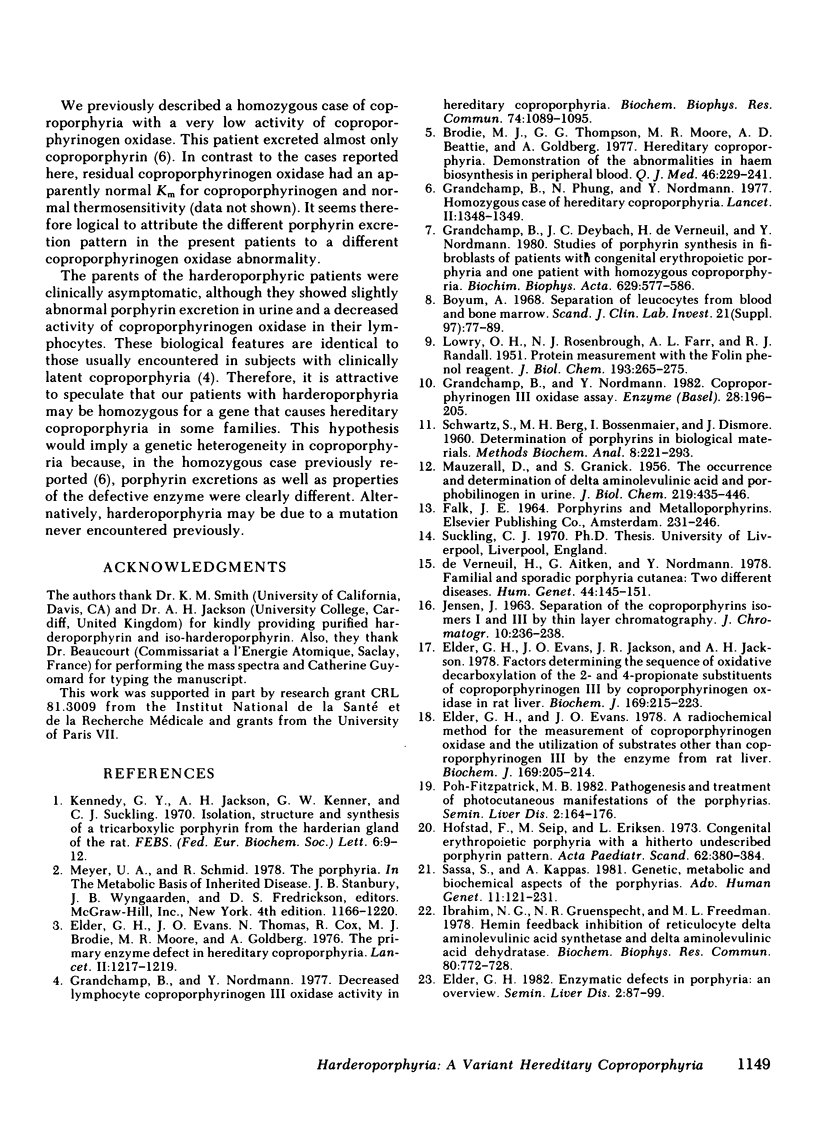
Selected References
These references are in PubMed. This may not be the complete list of references from this article.
- Brodie M. J., Thompson G. G., Moore M. R., Beattie A. D., Goldberg A. Hereditary coproporphyria. Demonstration of the abnormalities in haem biosynthesis in peripheral blood. Q J Med. 1977 Apr;46(182):229–241. [PubMed] [Google Scholar]
- Elder G. H. Enzymatic defects in porphyria: an overview. Semin Liver Dis. 1982 May;2(2):87–99. doi: 10.1055/s-2008-1040699. [DOI] [PubMed] [Google Scholar]
- Elder G. H., Evans J. O. A radiochemical method for the measurement of coproporphyrinogen oxidase and the utilization of substrates other than coproporphyrinogen III by the enzyme from rat liver. Biochem J. 1978 Jan 1;169(1):205–214. doi: 10.1042/bj1690205. [DOI] [PMC free article] [PubMed] [Google Scholar]
- Elder G. H., Evans J. O., Jackson J. R., Jackson A. H. Factors determining the sequence of oxidative decarboxylation of the 2- and 4-propionate substituents of coproporphyrinogen III by coproporphyrinogen oxidase in rat liver. Biochem J. 1978 Jan 1;169(1):215–223. doi: 10.1042/bj1690215. [DOI] [PMC free article] [PubMed] [Google Scholar]
- Elder G. H., Evans J. O., Thomas N. The primary enzyme defect in hereditary coproporphyria. Lancet. 1976 Dec 4;2(7997):1217–1219. doi: 10.1016/s0140-6736(76)91143-0. [DOI] [PubMed] [Google Scholar]
- Grandchamp B., Deybach J. C., Grelier M., de Verneuil H., Nordmann Y. Studies of porphyrin synthesis in fibroblasts of patients with congenital erythropoietic porphyria and one patient with homozygous coproporphyria. Biochim Biophys Acta. 1980 May 22;629(3):577–586. doi: 10.1016/0304-4165(80)90163-4. [DOI] [PubMed] [Google Scholar]
- Grandchamp B., Nordmann Y. Coproporphyrinogen III oxidase assay. Enzyme. 1982;28(2-3):196–205. doi: 10.1159/000459102. [DOI] [PubMed] [Google Scholar]
- Grandchamp B., Nordmann Y. Decreased lymphocyte coproporphyrinogen III oxidase activity in hereditary coproporphyria. Biochem Biophys Res Commun. 1977 Feb 7;74(3):1089–1095. doi: 10.1016/0006-291x(77)91630-8. [DOI] [PubMed] [Google Scholar]
- Grandchamp B., Phung N., Nordmann Y. Homozygous case of hereditary coproporphyria. Lancet. 1977 Dec 24;2(8052-8053):1348–1349. doi: 10.1016/s0140-6736(77)90386-5. [DOI] [PubMed] [Google Scholar]
- Hofstad F., Seip M., Eriksen L. Congenital erythropoietic porphyria with a hitherto undescribed porphyrin pattern. Acta Paediatr Scand. 1973 Jul;62(4):380–384. doi: 10.1111/j.1651-2227.1973.tb08123.x. [DOI] [PubMed] [Google Scholar]
- Ibrahim N. G., Gruenspecht N. R., Freedman M. L. Hemin feedback inhibition at reticulocyte delta-aminolevulinic acid synthetase and delta-aminolevulinic acid dehydratase. Biochem Biophys Res Commun. 1978 Feb 28;80(4):722–728. doi: 10.1016/0006-291x(78)91304-9. [DOI] [PubMed] [Google Scholar]
- Kennedy G. Y., Jackson A. H., Kenner G. W., Suckling C. J. Isolation, structure and synthesis of a tricarboxylic porphyrin from the harderian glands of the rat. FEBS Lett. 1970 Jan 15;6(1):9–12. doi: 10.1016/0014-5793(70)80027-8. [DOI] [PubMed] [Google Scholar]
- LOWRY O. H., ROSEBROUGH N. J., FARR A. L., RANDALL R. J. Protein measurement with the Folin phenol reagent. J Biol Chem. 1951 Nov;193(1):265–275. [PubMed] [Google Scholar]
- MAUZERALL D., GRANICK S. The occurrence and determination of delta-amino-levulinic acid and porphobilinogen in urine. J Biol Chem. 1956 Mar;219(1):435–446. [PubMed] [Google Scholar]
- Mogensen C. E. The glomerular permeability determined by dextran clearance using Sephadex gel filtration. Scand J Clin Lab Invest. 1968;21(1):77–82. doi: 10.3109/00365516809076979. [DOI] [PubMed] [Google Scholar]
- Poh-Fitzpatrick M. B. Pathogenesis and treatment of photocutaneous manifestations of the porphyrias. Semin Liver Dis. 1982 May;2(2):164–176. doi: 10.1055/s-2008-1040706. [DOI] [PubMed] [Google Scholar]
- Sassa S., Kappas A. Genetic, metabolic, and biochemical aspects of the porphyrias. Adv Hum Genet. 1981;11:121–231. doi: 10.1007/978-1-4615-8303-5_3. [DOI] [PubMed] [Google Scholar]
- de Verneuil H., Aitken G., Nordmann Y. Familial and sporadic porphyria cutanea: two different diseases. Hum Genet. 1978 Oct 31;44(2):145–151. doi: 10.1007/BF00295407. [DOI] [PubMed] [Google Scholar]


